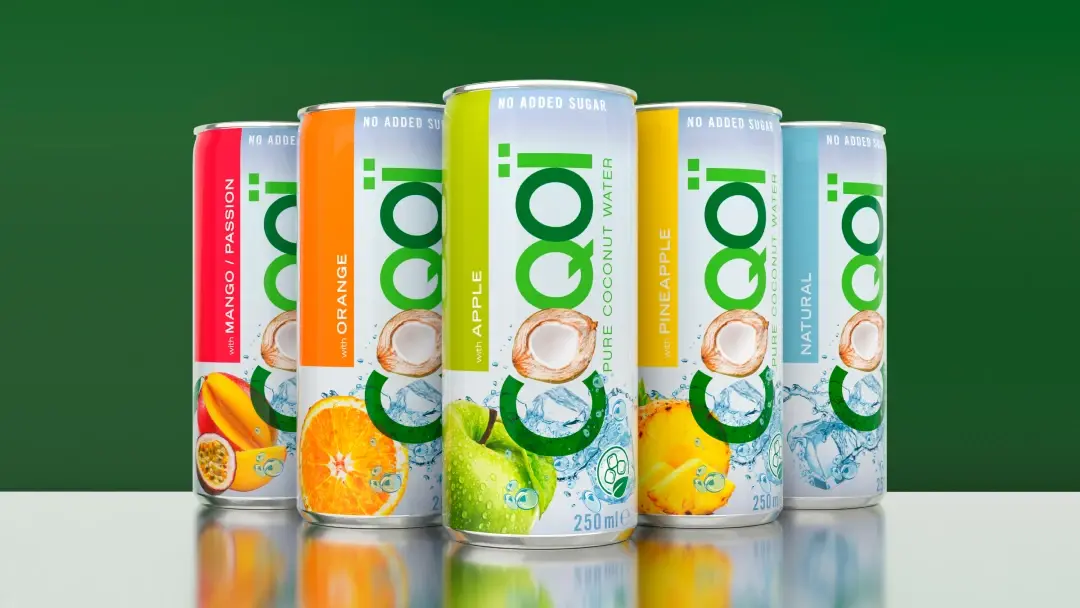While digital rather than print media may appear to dominate our lives, the global packaging printing market is enjoying sustained growth.
According to a report by Smithers entitled ‘The Future of Package Printing to 2027´, the industry is on track to be worth $551.3 billion by 2027. With the pressure of increasing volume, rising costs and sustainability expectations – there’s a greater need than ever for reliable, efficient digital artwork packaging tools to facilitate packaging processes for right-first-time print production.
What are Artwork Packaging graphic files?
Artwork packaging graphic files contain all the elements of a packaging design in a final set of digital files in preparation for prepress and printing. These graphic files contain design elements (e.g., images, text, logos), as well as product, marketing and regulatory information.
A vehicle for essential brand and consumer information – a meticulously compiled graphic file contains all the elements of a design agreed via an approval cycle.
Producing error-free artwork packaging files helps Packaging Managers attain their principal aims and objectives of:
- Reducing time to market
- Printing at an optimum cost
- Avoiding reprints
Prepress – a crucial stage in the packaging process
The prepress stage occurs between design and printing, when skilled prepress operators check, prepare and transform the packaging artwork to be print-ready.
The initial phase consists of adapting the graphic files they’ve received, often from a packaging design agency:
- to different printing formats (e.g., 25 cl, 50 cl, 1L)
- to offer a homogenous product range (e.g., green for apple flavour, orange for orange flavour)
- to make small alterations like a change to the text or a regulatory update (e.g., nutritional values or graphics, recycling information, or list of ingredients)
Printing plates are then made at the second stage. This is when the graphic files are altered to take into account the requirements and limitations of the printing equipment.
In a time-pressured industry, the prepress stage is key as any discrepancies identified beyond this stage are often expensive and time-consuming to correct.
The essential elements of a Packaging Artwork graphic file
So what essential items are contained in artwork packaging?
A well-put-together artwork package contains a number of elements including:
- Technical drawings of the packaging design (with folds, trim marks and format)
- A master artwork containing the final approved content
- Fonts
- CMYK colour profiles
- Approved text and required legal information from all the departments involved (e.g., marketing, quality control, legal, etc.)
- QR codes and barcodes
- Images including illustrations, pack shots, and photographic images
- Brand guidelines and master assets (e.g. instructions on how to use the logo)
At the photoengraving stage prepress operators check details (image quality, font size, legibility of barcodes, etc.) and adapt the file according to the specification of the printing equipment prior to the production of printing plates or printing. High-quality files at this stage are essential.
Streamlined organisation, communication and collaboration are of paramount importance at this crossover stage between the packaging concept and the finished product.
How to master colour consistency
Packaging does much more than protect a product – it’s an integral part of a brand's identity and colour consistency is a must. When we scan a supermarket aisle for our favourite brand, it’s usually a particular colour we’re looking for.
- Products are recognisable by their colour, whether Vanish pink or Coca-Cola red the shades are intertwined with brand identity and personality.
- Colour consistency renders products recognisable from a distance in a way text can’t.
- Colour consistency is known to be linked in consumers’ minds with quality.
Setting up all devices and equipment involved in the artwork life cycle with the appropriate colour profiles will result in consistent outputs that are in line with stakeholder expectations.
The use of CMYK colour profiles in the packaging artwork guarantees precision as RVB profiles designed for the screen will not look the same when printed.
Addressing Design Challenges in Artwork Packaging
Creating a striking piece of packaging that tells a brand story while seemingly effortlessly relaying product benefits, features and related compliance information is a multi-faceted task. Add the manual and laborious preparation of packaging artwork and visuals and the scale of the risks involved becomes apparent.
Here are some common design challenges packaging managers face during the packaging artwork process:
- Complex approval cycle – Multiple stakeholders’ contributions via non-centralised review processes using email, excel sheets or messaging platforms clog up and confuse the approval process.
- Slow approvals - without streamlined approval processes, packaging managers find themselves under pressure to meet deadlines and potentially delay products hitting the shelves.
- Lack of collaboration - Siloed processes between departments result in each element being considered in isolation rather than as part of a whole.
- Missing amendments, omissions and mistakes - non-centralised review processes make it difficult and time-consuming to stay on top of version control.
A successful artwork packaging process will improve the confidence of all stakeholders via up-to-date, reliable and complete information on every element of the design.
A transparent flow of information between internal and external stakeholders is essential at the prepress stage to get it right first time.
On the other hand, a confused process translates into details being missed at a granular level, resulting in issues with design elements like bleeds, trim marks and colour discrepancy.
Here are some solutions to these kinds of issues:
Bleeds
The bleed is the extension of colour, images and graphics beyond where the design will be trimmed. Extending a bleed guards against white lines showing at the edge of the packaging (and the need for a reprint).
Trim marks
Trim marks, or crop marks, indicate to the printer where to trim the packaging. Often placed inside the bleed line, some people recommend moving crop marks outside the bleed line so they won’t ever appear on the finished product.
Colour discrepancies
A discrepancy between what you see on screen and the printed product is disappointing and potentially expensive. Setting devices to CMYK settings and including CMYK profiles in the artwork will avoid this.
Overprinting
Unintentional overprinting also causes colour discrepancy. Overprint is when elements of the design overlap causing new shades to appear. A useful device for darker colours, it can be disastrous when used without realising, so check overprint and knockout settings before sending files or printing plates to the printer!
Recent advances in technology have spurred the development of software and platforms built to nurture a positive and traceable messaging flow at prepress. Packaging Managers can be more productive thanks to helpful tech with a focus on collaboration and centralising the approval cycle.
Rather than a manual, fragmented approach, a centralised approval cycle for artwork files means final proofs are easily accessible. Time and energy spent looking for final proofs in emails, via (often expired) links and messaging platforms can now be focused on:
- Tasks that bring added-value
- Being more responsive, creative and proactive in dealing with both management and clients
- Growing the number of packaging references / SKUs
- Increasing the number of marketing campaigns and gaining ground on the competition
Best Practices for Artwork Packaging
Here are a few practical tips for error-free file prep for Packaging Managers, Prepress Operators and Print Production teams:
- Check colour profiles are consistent across monitors, software and printers to minimise differences between the screen and the design in real life (CMYK rather than RGB)
- Supply graphic files in a suitable format like AI, PDF, EPS, TIFF or PSD
- Image resolution should be a minimum of 300 dpi at 100% for good print quality
- Embed or outline fonts to prevent them from being replaced
- Always provide a packaging prototype for checking purposes
- Use CMYK colour mode when sending files to the printer
- Extend the artwork to the bleed line
- Implement a standard Quality Control procedure so content is proofread for errors and checked against brand guidelines
- Carry out a final check of colours, fonts, logos, file size, format and resolution
- Use automated preflight checks after manual checks
Consistency is key for brands looking to create stand-out packaging that aligns with their brand story and identity.
Useful technology is on hand in the form of configurable SaaS software and platforms for artwork packaging projects.
These digital solutions offer standardised systems and automation tools to bring consistency to all aspects of packaging design and to speed up the packaging design process.
From the Artwork to the final packaging with a simple software
The surge in new tech has resulted in a raft of digital and automation tools to free packaging managers, prepress operatives and printers from time-consuming and manual tasks.
Millnet is a robust software and integrated digital prepress platform built to help brands and distributors handle the entire artwork packaging lifecycle – from creation to final print.
Fully configurable to fit individual business needs, Millnet seamlessly integrates with your inhouse workflow to deliver print-ready packaging files.
Built to improve collaboration, transparency, productivity, quality and connectivity, Millnet helps manage your artwork packaging workflows to:
- Ensure consistency across your brand
- Reduce time to market
- Avoid reprints
What are the features of Millnet: prepress packaging platform?
Personalised dashboard :
- An overview of projects including jobs completed and tasks to be done
- Prioritise tasks and monitor workflow
Online approval and version control :
- Centralised, streamlined workflow saves hours of manual, tedious work and reduces the risk of omissions for right-first-time print production
Secure, traceable annotations, messaging and information flow :
- Allows all departments to input their feedback easily and transparently
- External stakeholders can also interact with the software (at specific points in the process, with limited access)
Colour separation management :
- Locks in colour consistency to avoid negatively impacting the brand
Version comparison feature :
- Compare versions in a glance
Approved artwork proofs available in a couple of clicks :
- Proofs available online (not stored with suppliers)
- Proofs are accessible when a member of staff is on holiday or has left the company
Customisable user permissions :
- You’re in control of the information internal and external parties can access
Printer can access files directly from the web platform :
- With more than 700 registered printers, files don’t leave the platform from design to printing. Enjoy a fully traceable, complete journey.
Millnet aligns with your workflow to save packaging professionals time and money by securing and accelerating their packaging production.





